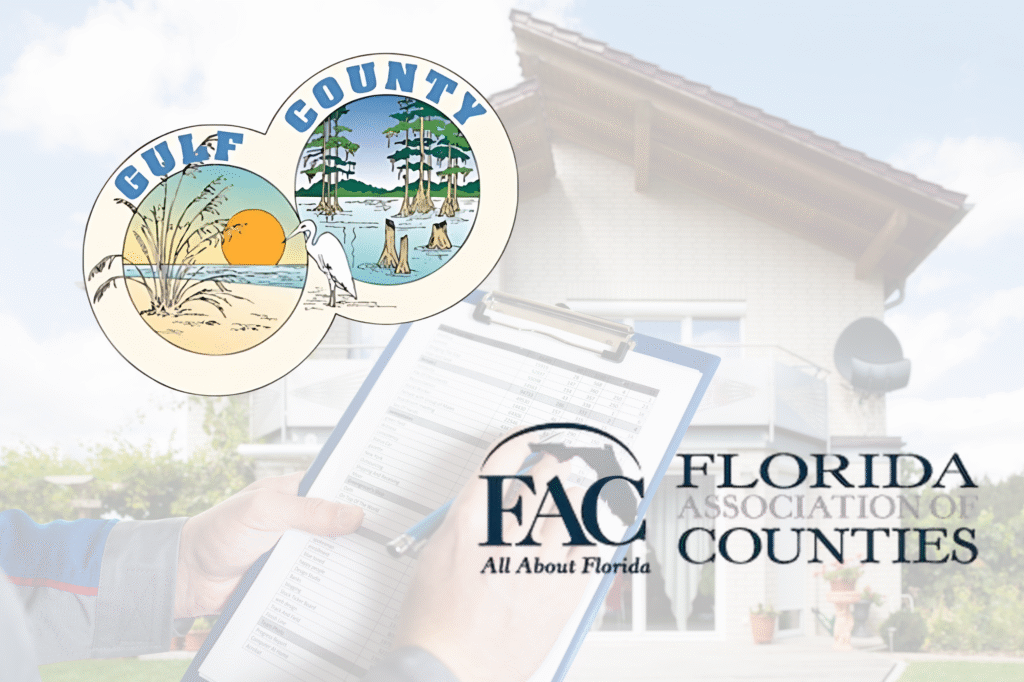
FAC falling for Gulf County’s schtick on the use of private provider inspections
Here we go again: county bureaucrats who don’t like a state law are circling the wagons, slow-walking compliance, and now trying to rewrite reality to make it sound like private providers are bad for residents and business. The Florida Association of Counties’ Community & Urban Affairs Committee is pushing an agenda item dressed up as “citizen protection,” but its own packet undercuts the scare story it’s selling. […]
October 17, 2025FAC falling for Gulf County’s schtick on the use of private provider inspections

TALLAHASSEE — Here we go again: county bureaucrats who don’t like a state law are circling the wagons, slow-walking compliance, and now trying to rewrite reality to make it sound like private providers are bad for residents and business. The Florida Association of Counties’ Community & Urban Affairs Committee is pushing an agenda item dressed up as “citizen protection,” but its own packet undercuts the scare story it’s selling.
The packet’s central claim is “secrecy” — that a contractor can use a private provider without the homeowner’s knowledge. So what? Homeowners hire licensed professionals precisely to make hundreds of technical decisions they don’t micromanage — which inspector to schedule is no different from which truss detail to spec.
The use of private providers, with or without homeowner signoff, is specifically permitted in Florida statutes. Private providers are licensed, certified, and insured to the same state standards as their public-sector counterparts. We all know that the private sector almost always moves more quickly and efficiently than the government. If a homeowner wants to be notified, that’s a contract choice between owner and contractor — not a pretext for counties to kneecap a lawful option.
We’re told private providers were “designed for bigger cities” or post-hurricane spikes, as if rural counties were never in the picture. But the packet also reminds readers the Florida Building Code is meant to apply uniformly across jurisdictions and that private providers have been in statute since 2002 – that’s 23 years! Translation: this isn’t a Miami carve-out — it’s statewide policy that counties have had decades to implement.
On oversight, the sales pitch is “lack of control.” The FAC agenda item tries to bury reality in the fine print, which lists the controls: sworn plan certifications; phase-by-phase inspections; 10-business-day permit timelines after affidavit; sworn certification of code compliance upon completion; and since 2024, mandatory, published audit procedures with results posted for the public.

If “no oversight” is your talking point while you quote the oversight, maybe the talking point needs an audit.
The fiscal bogeyman is even thinner. The packet declares “devastating financial impacts” on Gulf County and its residents, offers no numbers, and then quietly notes that when an owner elects to use a private provider, the permit fee must be reduced to reflect the county’s actual cost savings — with only a reasonable administrative fee allowed. If the math is so devastating, show it. Otherwise, this reads like counties protecting fee revenue, not homeowners.
And, of course, what we know is that it’s the private sector that is taking it in the teeth on this. Gulf County is charging businesses $500 for the use of private providers – and doing absolutely nothing in return.
The legislative rundown is similar sleight of hand. The “loss of local control” language is pinned to a bill that died. The one that passed in 2025 tweaked single-trade inspections and allowed limited post-start use of providers — hardly a system meltdown. Panic without provenance is politics, not policy.
And take a look at who submitted the item: Gulf County — via Brad Bailey. Readers of Red Tape Florida will remember Bailey from our reporting on Gulf’s flat $500 “review” fee when owners chose private providers. Bailey is not a licensed plans examiner nor does he have a building code administrator license, which makes him an odd face for an anti–private provider push built on technical authority. The through-line isn’t safety — it’s bureaucracy protecting its turf.
Bottom line: Florida’s private-provider law gives owners a legal, licensed, insured alternative to the use of local building departments – who often can’t or won’t deliver timely reviews and inspections. The packet trying to kneecap that option reads like a brief for preserving status quo revenue and control — not for protecting consumers. If counties want new tools, say what and why. But stop flouting the law, stop inventing problems, and stop pretending homeowners and small builders are the threat.
FAC shouldn’t embarrass itself further by advancing this item — a straw house, built on sand by an unlicensed builder.
Here’s a better idea – tell Gulf County start following the law.
October 17, 2025
Fees are taxes in sheep’s clothing
Property-tax scrutiny is pushing cities and counties toward a quieter revenue source: fees. In theory, fees are better than taxes because they connect what you pay to what you use. In practice, many of today’s “fees” are compulsory, appear on the property-tax bill, and climb steeply — functioning like taxes by another name.[…]
October 14, 2025Red Tape Florida
Fees are taxes in sheep’s clothing

If you don’t have a choice to pay it, it’s not really a fee
Property-tax scrutiny is pushing cities and counties toward a quieter revenue source: fees. In theory, fees are better than taxes because they connect what you pay to what you use. In practice, many of today’s “fees” are compulsory, appear on the property-tax bill, and climb steeply — functioning like taxes by another name.
Start with public safety. Kissimmee just created a $150 annual fire assessment to fund a shift to a 42-hour work week and new hires; commissioners framed it as the only realistic way to cover rising costs without jacking up the millage. Nearby Ocoee doubled its fire fee from $69.50 to $139.23 per “fire protection unit,” explicitly to avoid a property-tax increase.
The Tallahassee–Leon fire-services fight hinges on the City’s push for a massive fee hike: in June, commissioners backed a roughly 22–25% increase set to take effect in September; after the County voted 5–2 to reject it, the City floated a pared-back 9.98% “Plan B,” then on Sept. 17 voted to sever the interlocal fire-services agreement.
Stormwater is on the same path. Last year Orlando approved a multiyear schedule that lifts the typical residential stormwater bill toward about $21 a month by 2028; city staff said the jump was overdue after years without increases. Oviedo adopted annual stormwater hikes through 2033 that will push typical monthly charges well over $40 to finance a backlog of projects.
If these were simply user fees, you’d pay at the counter and opt out by not using the service. That’s not how they work. Florida’s “non-ad valorem assessments” are levied by local governments, posted on the same bill as your property taxes, and collected by the tax collector. Courts have long noted that special assessments aren’t ad valorem taxes, but they can still be imposed broadly when there’s a defined “special benefit” to property. That’s why fire and stormwater assessments can reach properties that otherwise pay little or no property tax. Orlando even spells it out plainly: stormwater is billed as a non-ad valorem charge on the annual tax bill.
Meanwhile, state leaders are floating big property-tax changes for homesteads, which only increases the incentive for locals to lean on assessments and fees instead. Whether or not those Tallahassee debates go anywhere, the local shift is already happening.
Here’s the rub: calling something a “fee” doesn’t make it feel any different to the family writing the check. A doubled fire assessment and a steep stormwater hike reduce disposable income just like a millage increase would. The main difference is political optics — fees face less backlash and are easier to target, so they’ve become the preferred tool to backfill public-safety payrolls and rebuild aging pipes.
None of this argues for starving core services. Fire protection and stormwater systems are essential, and costs are rising. But honesty demands we treat compulsory assessments like what they are: tax-like charges that deserve the same transparency and accountability as any millage increase.
Three fixes would help. First, add a single “all-in burden” line on local dashboards that shows the combined annual impact of millage, assessments, and utility charges for a typical home. Second, require a true pay-for-performance link—publish the service improvements tied to each increase (response times, staffing levels, flooded-street reductions) and report against them quarterly. Third, sunset schedules automatically unless councils re-vote after a public check-in.
If local government needs more money, make the case and show the results. But let’s retire the fiction that calling it a fee makes it anything less than a tax in sheep’s clothing.
October 14, 2025Red Tape Florida
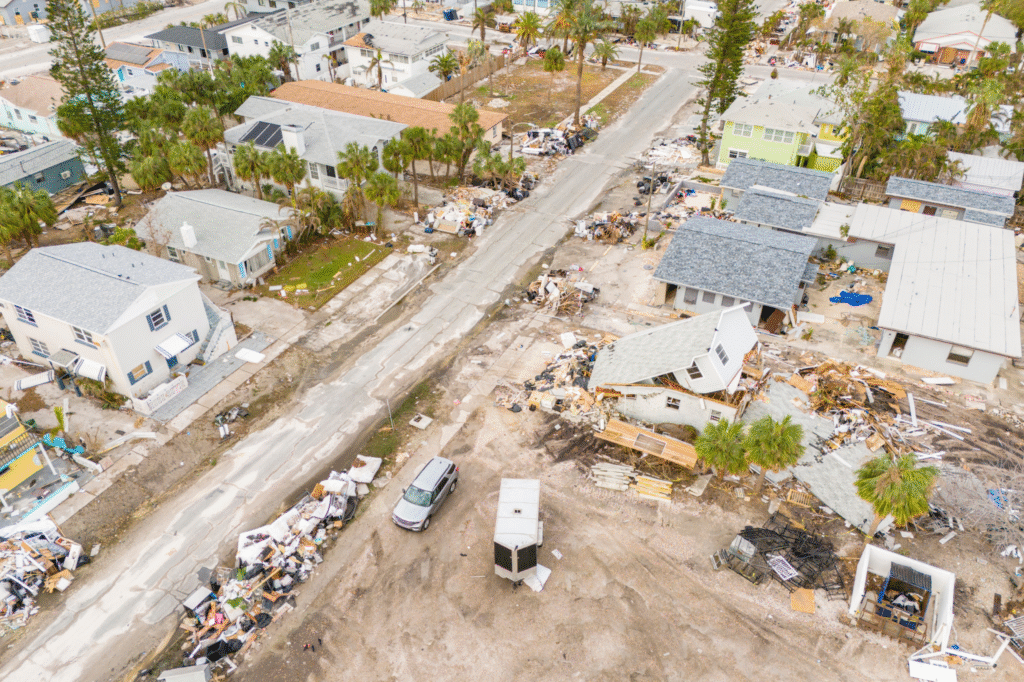
St. Petersburg permitting backlog is a Category 5 disaster for homeowners
A year after Hurricane Helene walloped Tampa Bay, St. Petersburg homeowners are still telling the same story: roofs tarped, repairs stalled, and permits stuck. In March, Mayor Ken Welch said the post-disaster permitting backlog would be cleared by the end of that month. But as recently as this week, residents told reporters they’re still waiting — and the city still hasn’t said how many permits remain in limbo. […]
October 2, 2025Red Tape Florida
St. Petersburg permitting backlog is a Category 5 disaster for homeowners

St. Pete said the permit backlog would be gone by March.
It’s October.
A year after Hurricane Helene walloped Tampa Bay, St. Petersburg homeowners are still telling the same story: roofs tarped, repairs stalled, and permits stuck. In March, Mayor Ken Welch said the post-disaster permitting backlog would be cleared by the end of that month. But as recently as this week, residents told reporters they’re still waiting — and the city still hasn’t said how many permits remain in limbo.
City Hall points to progress. Officials say they’ve issued more than 14,500 post-disaster emergency permits worth roughly $300 million and expect to return to “blue-sky” (normal) review times imminently. That’s real volume. It’s also not what matters to people who’ve watched one “two-week” timeline roll into the next while rainwater creeps behind tar paper.
Here’s what’s missing: numbers that mean something to a homeowner — outstanding permits by type, median days in review, and how many applications are kicked back for correction. FOX 13 says it repeatedly asked the city for the exact number of pending permits and got no answer. The public also deserves clarity on staffing: how many reviewers have been added, how many vacancies remain, and how much overtime has been authorized to burn the queue down.
Some residents have even received code-violation notices while they wait for approvals — the worst-case collision of bureaucracy with real life. If the city is truly on the cusp of clearing the backlog, it should be easy to publish the scoreboard: a daily-updated dashboard that shows count-by-permit-type, age-of-backlog, and projected clearance dates. Pair that with a plain-English “what to expect” timeline for common storm repairs and live office hours (virtual and in-person) where reviewers troubleshoot stuck applications on the spot.
There’s also a records piece here. Red Tape Florida has filed public records requests for: 1) the weekly backlog report (or closest internal equivalent) since January; 2) reviewer staffing levels, vacancies, and overtime records since November; 3) the number of code citations issued to properties with pending storm-repair permits; and 4) the city’s internal memos on the promised March clearance. If those documents match the rhetoric, great — publish them and show your work. If they don’t, own it and reset expectations with dates and data.
To be fair, St. Pete’s permitting office was already strained before Helene — demand surged along with construction, then two storms in two months pushed the workflow past its limits. But “we’re working on it” no longer works. Homeowners need finish lines, not press conferences. St. Pete can win back trust quickly with transparency, triage, and a little humility: tell people exactly where they stand, exactly what’s missing, and exactly when they can expect an inspection. Then hit those dates.
October 2, 2025Red Tape Florida
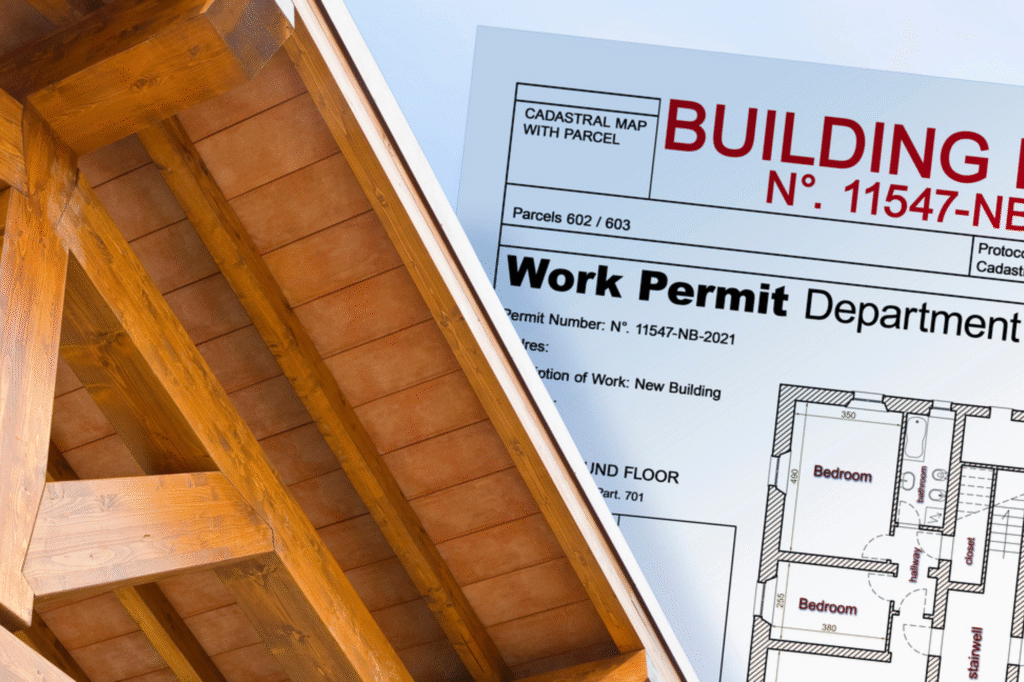
Permitting pivots: amnesty, capacity, and org charts — will they actually speed the queue?
Florida’s plan-review machinery is shifting in three places. If execution matches the headlines, applicants should see fewer re-review loops and faster close-outs. The question isn’t whether the moves sound good; it’s whether they move the metrics. […]
September 26, 2025Red Tape Florida
Permitting pivots: amnesty, capacity, and org charts — will they actually speed the queue?

Florida’s plan-review machinery is shifting in three places. If execution matches the headlines, applicants should see fewer re-review loops and faster close-outs. The question isn’t whether the moves sound good; it’s whether they move the metrics.
Pinellas County
Pinellas is waiving penalty fees for after-the-fact permits through Dec. 31, 2025 — an incentive to bring unpermitted storm repairs into the light. That’s good policy. It reduces underground work, gets inspectors on site, and lets homeowners fix paperwork without a punitive double-fee. The base permit still applies; the stick is gone so the carrot can work. What to watch: number of amnesty applications, median days from filing to inspection, and first-cycle pass rates. If those improve, this is a textbook compliance win.
Miami-Dade
Commissioners are reshuffling parts of environmental review as DERM is re-established as a stand-alone department. Supporters call it streamlining; skeptics worry about two lines instead of one. Treat this as an operations test: who owns the critical path end-to-end, and what are the posted service-level targets (days to first comments, re-review counts)? If the county publishes a single-owner RACI and hits SLAs, great—if not, applicants will just see a different badge at the same chokepoint.
St. Augustine
The city nudged short-term-rental registration fees for the first time since 2020. Staff say it’s cost recovery to fund inspections and oversight—not policy deterrence. That can be positive if the dollars are ring-fenced for throughput: an added inspector, faster re-inspections, and fewer recycling plans back to applicants. Ask to see the cost allocation and how many inspections the added funding will buy each month. The proof is in backlog shrinkage and complaint resolution time.
Bottom line for applicants: these are three different levers—amnesty, accountability, and capacity. Pinellas is the cleanest quick win if communication and scheduling keep pace. Miami-Dade needs a published owner and SLAs to be more than musical chairs. St. Augustine’s change will earn trust if the money clearly buys measurable speed.
Scorecard to track over the next quarter
- Pinellas: amnesty uptake, median days to inspection, % first-cycle approvals.
- Miami-Dade: before/after org chart, single process owner named, SLA performance.
- St. Augustine: inspection backlog trend, re-inspection lag, complaint resolution time.
Red Tape Florida
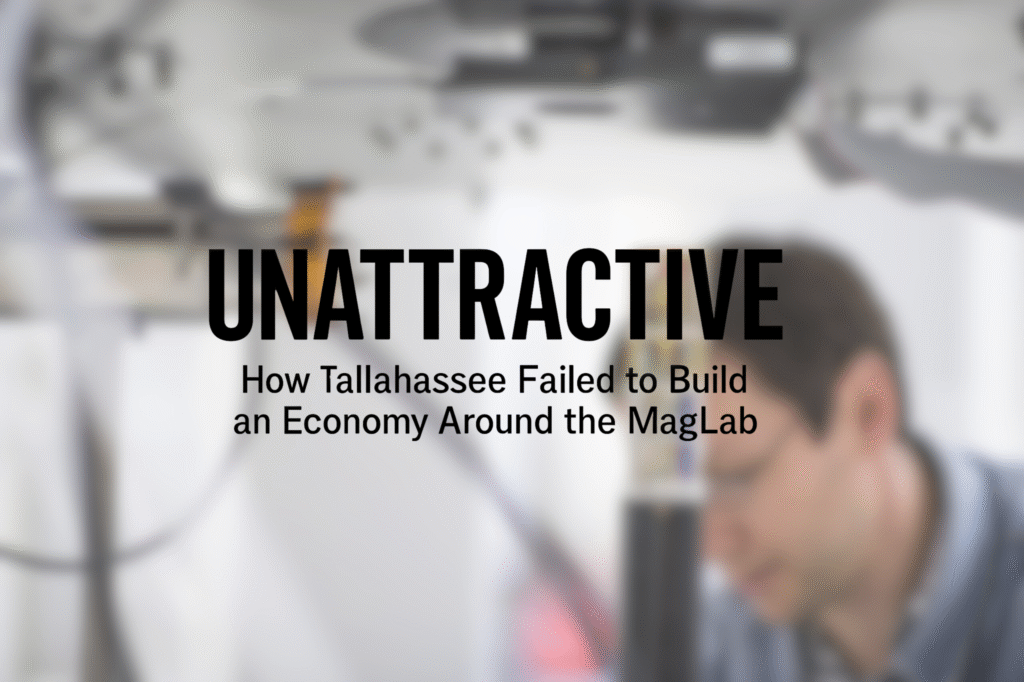
The Opportunity Still Exists — If We Want It
It’s easy to feel discouraged when examining what hasn’t materialized around the MagLab. There are no recognized clusters of private-sector R&D, no noticeable proliferation of startups, and no regional plan in place to activate this scientific powerhouse as an economic engine for North Florida. […]
September 19, 2025Red Tape Florida
The Opportunity Still Exists — If We Want It

Final part of a series
It’s easy to feel discouraged when examining what hasn’t materialized around the MagLab. There are no recognized clusters of private-sector R&D, no noticeable proliferation of startups, and no regional plan in place to activate this scientific powerhouse as an economic engine for North Florida.
But that reality is not set in stone.
The MagLab’s scientific output is elite. Its researchers are top-tier, and the facility’s presence in Tallahassee—backed by substantial NSF and state investment—is a rare asset.
And there are signs of life.
The Motor Drive Systems and Magnetics (MDSM) annual conference was held in Tallahassee for the first time this year and is returning in 2026.
Companies such as Biofront (disease testing kits) and Piersica (new battery technologies) have a toehold in Tallahassee.
What’s missing is a comprehensive strategy: a bold, shared vision among FSU, FAMU, TSC, the city, the county, state government and the business community. One that moves beyond resting on the lab’s reputation – and empty slogans like “Magnetics Capital of the World” — and actually delivers tangible results.
That means:
- FSU must open the gates — removing barriers to private-sector partnerships.
- The city must prioritize infrastructure, particularly power and site readiness for innovation-driven firms.
- The Chamber and economic development agencies must treat the MagLab as a keystone and persist when it comes to getting alignment among all the stakeholders listed above.
- And speaking of economic development, a collaboration between local government and the private sector must dramatically rework how OEV interacts with prospects to create a much higher level of agility and creativity.
- Leadership must emerge – that can convene stakeholders and tackle the issues that have led to 30 years of stagnation.
In the short term, here are 5 more quick wins that could be achieved in the next 24 months.
- Launch the MagLab Commercialization Challenge
An annual, high-visibility competition offering seed funding, lab access, and expert mentoring to startups or companies that can develop market-ready products from MagLab research. Winners commit to establishing or expanding operations in Tallahassee, turning lab breakthroughs into local jobs.
- Launch an “Innovation Sites” Map
Publish an online, publicly accessible map showing shovel-ready industrial parcels, with details on power capacity, broadband speed, and zoning — the same intel site selectors demand on day one.
- Secure a Signature Industry Partner
Land one high-visibility corporate tenant in advanced materials, clean energy, or biotech that actively uses MagLab capabilities, and announce it prominently.
- Host a National Tech + Science Summit in Tallahassee
Use the MagLab as the anchor venue for a multi-day, industry-heavy event — following the MDSM model but broadened to attract venture capital, suppliers, and manufacturing prospects.
- Set a Goal – and Achieve it
Commit to recruiting at least five MagLab-related companies and creating 250 new private-sector R&D/manufacturing jobs by the end of year two — and publish progress quarterly.
Conclusion
There is no way around it – Tallahassee’s inability to build an economy around the MagLab is a massive underachievement.
But it’s not too late to turn things around.
It starts with acknowledging how little has been done so far … and recognizing just how much is still possible through collaboration, humility, creativeness and energy.
September 19, 2025Red Tape Florida
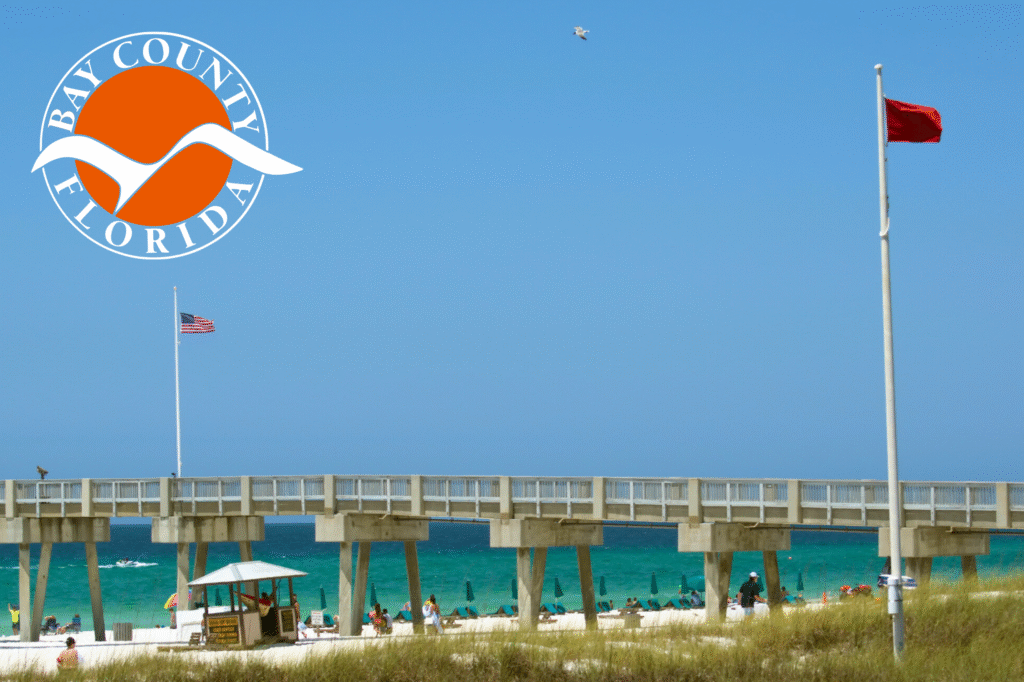
Bay County’s Surplus Fee Shuffle
Bay County Commissioners are headed to the Florida Association of Counties conference with a little problem in their carry-on: millions in so-called “surplus” building fees that, by law, they’re supposed to refund. Instead, they’re trying to wish the whole thing away. […]
September 17, 2025Red Tape Florida
Bay County’s Surplus Fee Shuffle

Bay County Commissioners are headed to the Florida Association of Counties conference with a little problem in their carry-on: millions in so-called “surplus” building fees that, by law, they’re supposed to refund. Instead, they’re trying to wish the whole thing away.
Here’s the hitch. Florida Statute 553.80 isn’t subtle. It says building permit and inspection fees can’t be padded to turn a profit. They’re supposed to cover the actual cost of enforcing the building code. Nothing more. Nothing less. If counties collect too much, they either roll a limited amount forward to cover future costs or they refund the excess. Pretty straightforward.
But Bay County’s interpretation seems to be: “Thanks for the cash, citizens, we’ll hang on to it.”
The statute even includes a bright-line test. Counties can’t carry forward more than the average of their last four years of building code enforcement budgets. Anything above that is supposed to go back to the people who paid it — builders, homeowners, business owners. In other words, the folks who thought they were paying a fee for service, not donating to Bay County’s general slush fund.
And yet, Bay County is signaling it has no intention of writing refund checks. That’s not just bad optics, it’s potentially illegal. Attorney General opinions have long warned that when governments collect more than the actual cost of regulation, those “fees” start looking a lot like unauthorized taxes. And last we checked, counties don’t get to levy their own surprise taxes on construction projects.
So why is Bay County digging in? According to minutes and chatter around the FAC meeting, the surplus is being rebranded as a “reserve” — a rainy-day fund for future code costs. Never mind that state law already defined how big that reserve can be. It’s a little like trying to claim your kitchen junk drawer as a retirement plan.
The scale of the numbers matters here. Bay County’s 2022-23 Building Permit and Inspection Utilization Report (required by law to be posted online) shows collections far outpacing expenditures. The statute requires the report to include revenues, permit volumes, inspections, and costs — a transparency measure meant to prevent exactly this kind of gamesmanship. But transparency is useless if officials look right past the black-and-white rule: surplus beyond the cap has to be refunded.
This is more than a bookkeeping squabble. Builders and homeowners are already paying some of the highest input costs in memory — materials, labor, insurance. Now they find out Bay County may be pocketing fees in excess of actual costs. The law says those fees belong back in the wallets of the people who paid them.
If Bay County thinks it can out-lawyer the statute, it should brace for pushback. Other counties have been down this road before, and the pattern is clear: the longer you hold onto surplus fees, the worse the headlines and the higher the risk of legal challenge.
The kicker? All of this is playing out while county leaders beg for more trust from taxpayers and the Legislature. Nothing erodes credibility faster than ignoring the plain text of the law because it’s inconvenient.
Bay County can fix this two ways:
- Adjust fees downward so collections match costs.
- Refund the surplus as the statute requires.
What it can’t do — legally or ethically — is rebrand illegal surplus as “savings” and hope nobody notices. Spoiler alert: people are noticing.
So, the question heading into the FAC conference isn’t whether Bay County officials will discuss surplus fees. It’s whether they’ll follow the law or keep pretending the rules don’t apply to them.
September 17, 2025Red Tape Florida

Profit-sharing at a nonprofit? Fair’s bonus payouts, $25k signing bonus raise red flags
After Red Tape Florida first reported about the now-infamous $28,000 retirement watch, fallout was swift, with local and state officials demanding an investigation. Now, a new revelation: The incoming executive director of the Fair — who has defended the board’s decision to buy the luxury watch for her predecessor — herself received a $25,000 cash signing bonus upon being hired.[…]
Red Tape Florida
Profit-sharing at a nonprofit? Fair’s bonus payouts, $25k signing bonus raise red flags

“Profit sharing” at a nonprofit.
A $25,000 signing bonus.
A salary higher than the 20-year veteran a new director replaced.
Internal documents and interviews obtained by Red Tape Florida reveal how the North Florida Fair is rewarding its leaders — and why officials are demanding answers.
After Red Tape Florida first reported about the now-infamous $28,000 retirement watch, fallout was swift, with local and state officials demanding an investigation.
Now, a new revelation: The incoming executive director of the Fair — who has defended the board’s decision to buy the luxury watch for her predecessor — herself received a $25,000 cash signing bonus upon being hired.
In a Dec. 5, 2024, offer letter from then-board Chair Rachel S. Pienta – who resigned in protest after the watch controversy — new fair manager Miranda Muir was offered a contract that included:
- $125,00 annual salary
- Health insurance
- 401k with 3 percent employer match
- A one-time $25,000 signing bonus
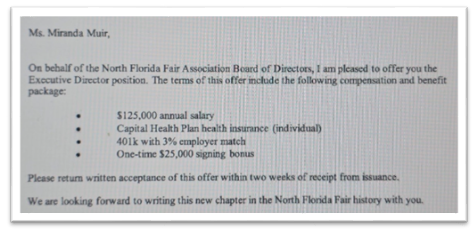
Minutes from the September 12, 2024, meeting reveal a discussion about the offer to Muir, who had been attending meetings since 2023 as the heir apparent to the director’s job and seemed a lock for the position.
While Harvey had not yet set a retirement date, the board moved toward making an offer to Muir. Initially, a base salary of $100,000 was discussed – below the long-time outgoing manager Harvey’s salary of $112,000. But board member Marcus Boston said he “went on the internet” and found a higher range
A committee was formed and there was also a mention of one-time moving expenses, but no mention of any sort of bonus. In the end, Muir received a base salary more than 10 percent higher than Harvey — and the $25,000 bonus.
Board member Steve Hurm, contacted this week by Red Tape Florida, said the board never discussed a signing bonus. “That information was never brought to me and if it had been I would have objected,” said Hurm.
Pienta declined to comment on the Muir offer saying in a statement: “I want to reiterate that it has been an honor and a privilege to serve on the North Florida Fair board over the years, including as Board President/Chair since 2024. I have stepped down from that position and will continue to focus on and strengthen our local 4-H programming and participation in the Fair moving forward.”
“Profit sharing”
Meanwhile, the bonus money has been flowing at the fair for years and has been referred to at meetings and in minutes as “profit-sharing.”
When Hurm first heard that term he was alarmed.
“When a board member mentioned ‘profit-sharing,’ Hurm recalled, “I interrupted and said it was a nonsensical term – we’re a non-profit.”
By law, nonprofits don’t have “profits” to share. The IRS flatly prohibits it: no part of a charity’s earnings may inure to the benefit of insiders. Reasonable salaries? Sure. Profit sharing? That’s the language of Wall Street, not a 501(c)(3).
Watchdog groups warn boards constantly about even appearing to funnel surpluses to executives. Florida law is equally clear: compensation must be reasonable, but distributing income to officers is off-limits. And yet, here is a nonprofit agricultural fair association putting “profit sharing” in black and white — not whispered in a back room, but recorded as if it were standard practice.
It’s not just sloppy language. It’s a governance red flag that makes the organization look less like a community charity and more like a for-profit corporation cosplaying as one.

In 2023, Harvey received $27,500 in bonus money for strong performance of the annual fair. Minutes for 2024 aren’t available, but the 2025 proposed budget shows that total staff bonuses in 2024 were $74,000.
It is not clear if Harvey received a bonus this year for 2024 fair performance, but the 2025 total budget for bonuses rose to $100,000.
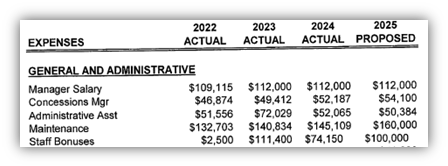
In the North Florida Fair’s most recent publicly available form 990 – from fiscal year 2023 – Harvey had a reported $178,000 in total compensation. Of that, according to schedule J on the form, $103,715 was base salary, $63,500 was bonuses, $7,619 was “other compensation” and $3,726 was retirement and deferred compensation.
Also that year, two board members of the non-profit were paid — $2,809 to George Kolias and $571 to Carole Abbott. The watch controversy drew withering criticism from Leon County Commissioners Bill Proctor, Christian Caban and Brian Welch at Wednesday’s meeting, while Commissioner Nick Maddox did not appear as concerned. Hanging over the issue is $30 million in proposed Blueprint funding to enhance the fairgrounds. That funding was frozen at a recent Blueprint meeting by a 9-3 vote with Tallahassee Mayor John Dailey, City Commissioner Dianne Williams-Cox and Maddox voting against.

Also a factor is Leon County’s lease with the Fair.
But before the retirement watch controversy broke, it was fair board members who thought they had the upper hand in negotiations with Leon County over the fair’s $1 lease.
Board member Lee Vause Jr., who remains on the board after supporting the retirement gift, was quoted in the minutes responding to a conversation about the Fair’s lease with Leon County by saying: “We don’t have to negotiate lease with County. They want something, not the Fair. Fair is in better position, not County. Wait for County to get in touch with the Fair.”
September 17, 2025Red Tape Florida
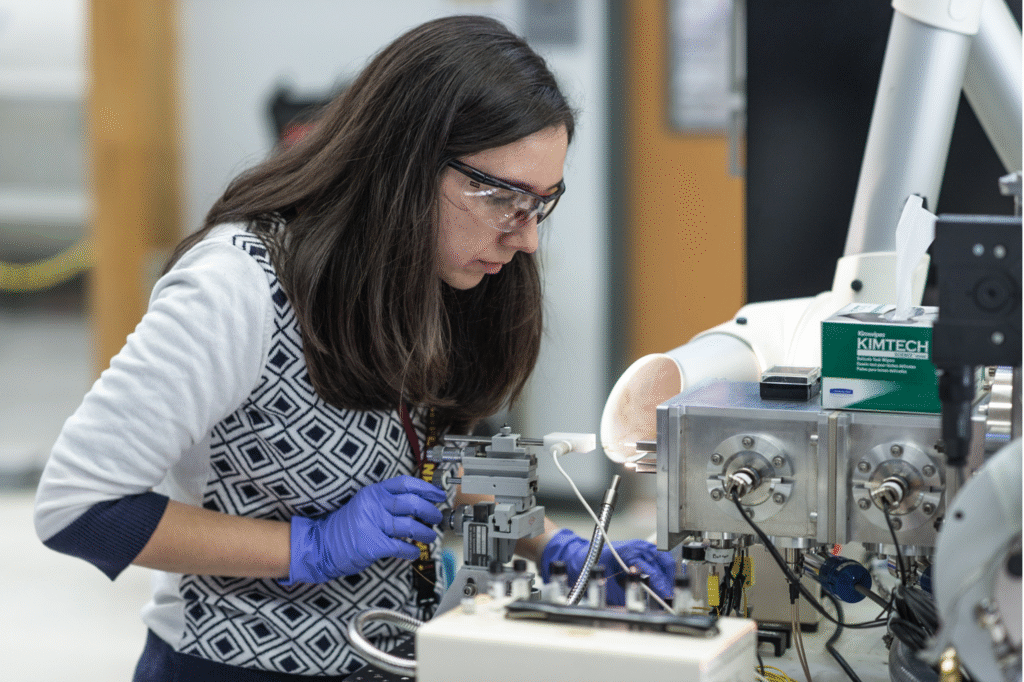
Building a MagLab ecosystem: Is it FSU’s job or a wide array of stakeholders?
Florida State University secured the bid and has drawn world-class researchers to the MagLab. It has kept the MagLab operational, but without the lavish upgrades seen elsewhere on campus (Doak Campbell Stadium, student union, etc.). The successes at the MagLab have primarily been the product of the scientists and researchers doing the actual work. […]
September 15, 2025Red Tape Florida
Building a MagLab ecosystem: Is it FSU’s job or a wide array of stakeholders?

Part 4 of a series
Florida State University secured the bid and has drawn world-class researchers to the MagLab. It has kept the MagLab operational, but without the lavish upgrades seen elsewhere on campus (Doak Campbell Stadium, student union, etc.). The successes at the MagLab have primarily been the product of the scientists and researchers doing the actual work.
And when it comes to translating that scientific prestige into broader economic benefits for Tallahassee, FSU’s role becomes more complex and, at times, restrictive.

1. The self-evaluation problem
FSU regularly publishes economic impact reports estimating the MagLab’s local annual output. However, these reports are produced by FSU’s own research center (CEFA) and rely heavily on FSU-generated spending data, rather than independently audited outcomes or private-sector-led growth.
This raises concerns about potential bias and the absence of independent validation.
2. A culture of insularity
While many universities collaborate with local stakeholders, FSU appears to operate with limited outward engagement. Although Innovation Park – over which the university now has much more control — hosts some private sector entities, it remains predominantly academic and research-focused, rather than a thriving hub of public-private innovation. And there is no way around the fact that the park’s location – save for its proximity to the airport – is not desirable.
3. Gatekeeping vs. partnering
Some business leaders feel FSU treats the MagLab as its own asset—rather than a community resource. Further, FSU does not give the MagLab its own voice to be a community resource because all the business-related deals must go through FSU-sponsored research.
These perceptions may ultimately undermine trust and deter entrepreneurial or investment opportunities.
4. No clear economic vision
FSU lacks a visible, comprehensive plan to translate the MagLab’s scientific strengths into a citywide economic strategy. Unlike institutions that launch innovation districts, venture funds, or commercialization pipelines, no comparable effort is evident here.
What Could Change
This isn’t a critique of FSU’s scientific excellence but a call for strategic recalibration. FSU should:
- Invite independent review of its economic impact claims.
- Formulate a public-private economic growth strategy centered around the MagLab.
On this point, there are numerous examples of institutions that have taken the lead. North Carolina State University’s Centennial Campus in Raleigh is a 1,300-acre, university-planned public-private research community that intentionally recruited more than 75 corporate, government, and nonprofit partners to co-locate with academic departments and research centers — creating thousands of private-sector jobs and driving Raleigh’s transformation into a tech hub. Similarly, Arizona State University’s SkySong Innovation Center redeveloped a shuttered mall into a thriving mixed-use campus housing over 80 companies, blending academic research with industry to generate sustained regional investment and employment. These projects weren’t incidental spinoffs — they were university-designed strategies to harness institutional assets for local economic growth. - Expand partnerships with private-sector firms, accelerators, and developers.
- Reposition itself not only as a scientific steward, but as a partner in regional prosperity.
If the MagLab is truly a national asset, its benefits should reach beyond campus boundaries.
And then the burden shifts to other stakeholders:
Local government: The lack of a community economic development vision is apparent to anyone paying attention. That has to change. Further, businesses that visit our market lament the bulky, clumsy structure of the Office of Economic Vitality with its unclear lines of decision-making and lack of dexterity. That has to change, too.
State government: Understandably, Tallahassee is viewed as a business-unfriendly, anti-growth, hyper-political town. But the potential of a MagLab-driven economy is too great to let those realities overcome it.
Private sector: The Chamber has simply not been effective in convening the public sector stakeholders to solve this problem. Perhaps a different group of strong business leaders is up to the challenge.
Coming next: Is it too late? (Spoiler alert: No)
September 15, 2025Red Tape Florida
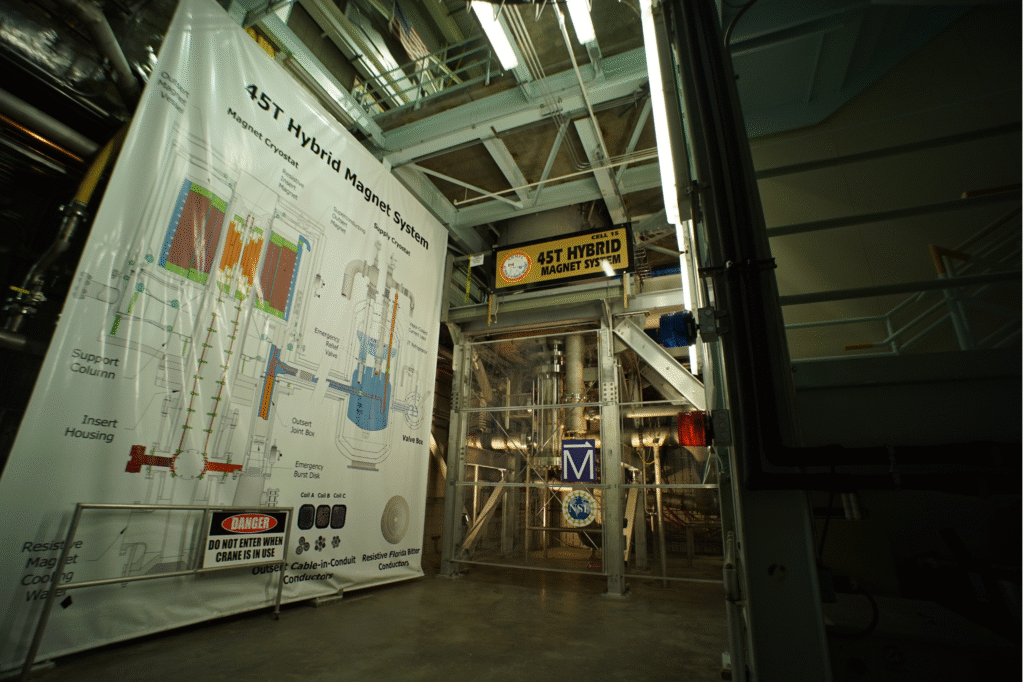
What could have been built around the MagLab (and what still could be)
In August 1990, the National Science Foundation awarded the National High Magnetic Field Laboratory to FSU — a decision that surprised many, including MIT, which had operated the Francis Bitter National Magnet Laboratory for 30 years. The original promise was vivid: a world-class scientific facility anchoring Florida’s capital city in the emerging area of magnetics. […]
September 11, 2025Red Tape Florida
What could have been built around the MagLab (and what still could be)

Part 3 of a series
In August 1990, the National Science Foundation awarded the National High Magnetic Field Laboratory to FSU — a decision that surprised many, including MIT, which had operated the Francis Bitter National Magnet Laboratory for 30 years. The original promise was vivid: a world-class scientific facility anchoring Florida’s capital city in the emerging area of magnetics.

Three decades after FSU won the competition to host the National High Magnetic Field Laboratory, the scientific mission of the MagLab is undeniably successful — the lab holds multiple world records and attracts top researchers from around the globe. But in terms of local economic impact, the results have fallen short of the original vision.
So, what would success have looked like? Here are four areas where Tallahassee has not kept pace with other national lab communities — and where it still has an opportunity to improve:
1. A research park that catalyzes private-sector growth
In thriving innovation districts, anchor institutions spark the development of adjacent private-sector firms. At Los Alamos and Oak Ridge, for example, national labs are surrounded by ecosystems of federal contractors, startups, and applied research firms.
Tallahassee’s, by contrast, is dominated by public and academic entities. It mainly consists of empty lots and aging buildings, except those built by FSU which have no connection to the MagLab. As detailed in part 2, the commercialization pipeline remains underdeveloped.
2. A tech corridor with venture capital and startup activity
Florida ranks among the top ten states for total venture capital investment — but virtually none of that flows through Tallahassee. From 2012 to 2021, the state attracted over $85 billion in VC and private equity, with nearly all of it concentrated in Miami, Tampa, and Orlando.
In Tallahassee, tech-based entrepreneurship remains rare, and there are very few examples of biomedical spinoffs or next-generation materials companies directly tied to MagLab research.
3. Strategic alignment between lab, government, and infrastructure
Cities like Los Alamos and Oak Ridge benefit from coordinated local and state investment in infrastructure, workforce development, and commercialization strategies to support lab spillover.
Tallahassee lacks such alignment. Its electric grid and zoning regulations have not been meaningfully modernized to attract energy-intensive firms. And the MagLab has also failed to embrace current energy solution technologies, instead choosing to stay the course from the early 1990s on how energy is managed – which is wasteful given what is available today.
4. Brand equity and national recognition
The MagLab is recognized in the scientific community for its world-record magnets — but its national profile is surprisingly low outside of research circles.
Unlike Oak Ridge or Los Alamos, which are synonymous with scientific innovation, Tallahassee rarely markets the MagLab as a signature asset. That’s not a failure of the science — it’s a missed opportunity in branding and communications.
5. More and better energy capacity and usage
If Tallahassee ever hopes to build an innovation economy around the MagLab, a basic question must be asked: Is the city even equipped to support one?
The answer is: maybe, maybe not.
Start with electricity. The MagLab is a power-hungry facility — among the largest single energy consumers in the region. In summer 2024, reports circulated that Florida State University had been asked by the City of Tallahassee to shut down MagLab power operations for an hour due to load concerns. This raises a fundamental red flag about whether our city-owned utility can support the demands of energy-intensive research or industrial-scale commercial spinoffs.
One issue is that the MagLab is still using 1990s-era magnets that are high-energy consumers. Existing technology would make these magnets operate more efficiently and lower power consumption when it comes to cooling and powering the magnets.
The MagLab’s most powerful magnets can draw between 18 and 33 megawatts. At the upper end, that’s enough power to supply roughly 20,000 U.S. homes. Tallahassee apparently has no surplus generating capacity – where would the power come from if a new data center, battery plant, or high-wage advanced manufacturer was eyeing Tallahassee?
6. Site readiness
Beyond electricity, there’s also site readiness. Tallahassee lacks shovel-ready parcels that are truly equipped for tech-sector investment. In communities like Oak Ridge and Los Alamos, federal labs are surrounded by pre-zoned, utility-ready development pads supported by regional industrial recruitment efforts. Not so here.
Bottom line: Even if the MagLab did produce a wave of commercialization, it’s unclear whether Tallahassee could physically support the growth. Our infrastructure isn’t ready, our energy grid is strained, and our land inventory is weak.
The Good News
It’s not too late. The MagLab remains among the world’s top facilities in its field. Realizing its broader potential will require:
- A serious commercialization strategy
- Infrastructure enhancements to attract private investment
- Deliberate partnerships across academia, government, and industry
- Independent economic metrics and bold regional targets
A world-class lab deserves a world-class regional strategy. Tallahassee has a second chance — if its leaders seize it.
Coming next: Is this an FSU problem or an all-the-other-stakeholders problem?
September 11, 2025Red Tape Florida

“Completely inappropriate”: Local, state leaders outraged over luxury watch gift
Leon County Commission Chair Brian Welch blasted actions by the North Florida Fair board on Friday as “completely inappropriate and utterly confounding,” adding he will seek a review by both Leon County Government and the Blueprint Intergovernmental Agency to determine “what level of oversight we have in the management of the fairgrounds.” […]
September 9, 2025Red Tape Florida
“Completely inappropriate”: Local, state leaders outraged over luxury watch gift

Leon County Commission Chair Brian Welch blasted actions by the North Florida Fair board on Monday as “completely inappropriate and utterly confounding,” adding he will seek a review by both Leon County Government and the Blueprint Intergovernmental Agency to determine “what level of oversight we have in the management of the fairgrounds.”
“I cannot believe that a non-profit board that oversees the administration of a public asset would act in such an irresponsible way,” Welch wrote. “I intend to ensure that both Leon County Government and the Blueprint Intergovernmental Agency investigate this situation as soon as possible.”
Tallahassee City Commissioner Jeremy Matlow also weighed in on Red Tape Florida publisher Skip Foster’s Facebook page saying the gift was “incredibly out of touch.”
Florida State Rep. Allison Tant also registered her outrage: “If this watch was paid with anything supported by tax dollars, it should be returned and refunded,” Rep. Tant said. “And the fairground authority should be audited. This is not what public or not-for-profit funds should be used for.”
Welch’s post landed as social media comments were unanimously outraged and featured calls for accountability. A sampling:
Anger over spending and priorities
- “Blatant misuse of funds.” — Allison Flynn
- “Personally, I don’t think anyone should have a $35,000 watch when children are homeless and/or going hungry!” — Liz Jameson
- “$200 watches work just as well.” — Colleen Castille
Credit for dissent and calls to return money
- “Proud of Rachel Sutz Pienta and the others who resigned. Now, how about the director refuse to take it and return the $? That’s what should happen next.” — Carrie Boyd
- “What incredible audacity! … Bravo to Rachel Sutz Pienta and the other board members who refused to go along with this…” — Rick Oppenheim
Governance and oversight concerns
- “Truly outrageous. I wonder if an audit would reveal other reckless expenditures.” — Bill Berlow
- “The fairgrounds board has had a cloak of protection… They answer to no one. This can only change with leadership addressing it.” — Henree D. Martin
- “This is the ‘rest of the story’ I’ve been waiting for.” — Pam Jordan Anderson
Bigger-picture ideas
- “The fairgrounds need to relocate to Gadsden County. Become truly regional.” — Ed Murray Jr.
Why it matters
The North Florida Fair is run by a private not-for-profit association but operates a community asset and regional venue. That public–private mix is fueling questions about who sets the rules, how directors are chosen, and what public oversight exists.
What’s next
- Welch says he’ll press for County/Blueprint inquiries into oversight levers (leases, grants, interlocal agreements).
- Commenters are calling for the Fair Association to publish its bylaws, explain how board seats are filled, and return any inappropriate purchases.
- Several readers urged a full audit and a public workshop before any board changes move forward.
RTF has requested the association’s governing documents and any county/Blueprint agreements related to the fairgrounds. If you have records or perspectives to add, email info@redtapeflorida.com.
September 9, 2025Red Tape Florida